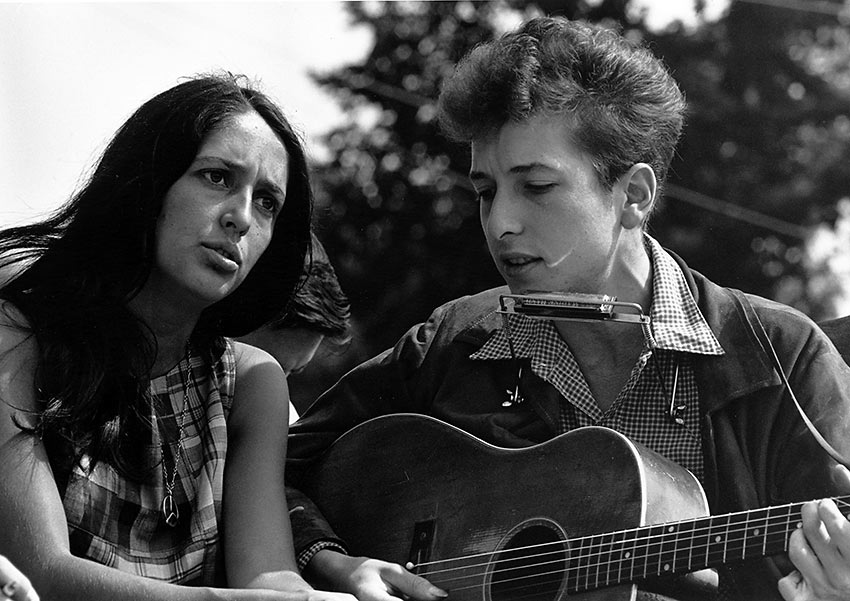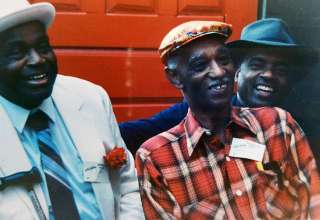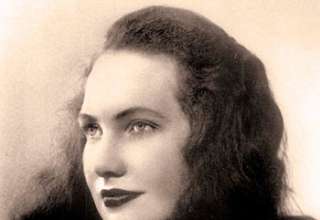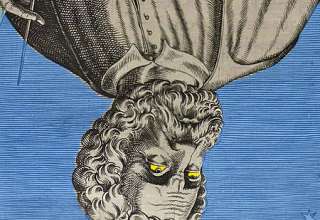
In Bob Dylan’s famed August 1965 interview with Nora Ephron and Susan Edmiston many silly questions were asked: “Where did you get that shirt?” At one point, Ephron had the gumption to ask Dylan, “Who is Mr. Jones in ‘Ballad of a Thin Man?’”
In his typical toying way, Dylan arched the answer way over his interrogator’s head: “He’s a real person. You know him, but not by that name… Like I saw him come into the room one night and he looked like a camel.
He proceeded to put his eyes in his pocket. I asked this guy who he was and he said, ‘That’s Mr. Jones.’ Then I asked this cat, ‘Doesn’t he do anything but put his eyes in his pocket?’ And he told me, ‘He puts his nose on the ground.’ It’s all there. It’s a true story.”
Although he was merely deflecting a stupid question in a clever way, his elusiveness only spurred an even greater curiosity. Suddenly, “Who is Mr. Jones?” became the running debate.
Possible Contenders
Since the release of “Ballad of a Thin Man” on the 1965 album, “Highway 61 Revisited,” Dylan has never revealed the true identity of the actual Mr. Jones. However, at a 1986 concert in Japan, he prefaced a performance of the song by saying, “This is a song I wrote in response to people who ask questions all the time. You just get tired of that every once in a while.”
That statement immediately debunks the theory that the song is about Rolling Stones guitarist Brian Jones.
In the haze of amphetamine paranoia preceding his death, Jones believed he was indeed the Thin Man of Dylan’s rock ballad.
Over time, it has become widely accepted that Mr. Jones was inspired by a clueless journalist who pestered Dylan with naive questions during an interview. And the song’s opening lines tend to support this theory.
You walk into the room
With your pencil in your hand
You see somebody naked
And you say, who is that man?
You try so hard
But you don’t understand
Just what you will say
When you get home
Because something is happening here
But you don’t know what it is
Do you, Mister Jones?
The Real Mr. Jones?
Music journalist and later film professor, Jeffrey Jones, has long publicly claimed that he was, in fact, the character in Dylan’s song. Over time he became the officially accepted Mr. Jones by the media. A young intern for TIME magazine, Jones interviewed Dylan at the 1965 Newport Folk Festival the day he went electric, allegedly perturbing Dylan with a line of stupid questioning.
Another possibility is Max Jones of Melody Maker magazine, who first interviewed Dylan in May 1964. Dylan specifically asked for the British music journalist at a 1965 London press conference. The scribe even appears in D.A. Pennebaker’s color film footage shot during Dylan’s 1966 world tour, which eventually became the unreleased film, “Eat the Document.”
In Todd Haynes’ 2007 film “I’m Not There,” actor Bruce Greenwood plays the role of straight-edged music journalist “Keenan Jones” (ostensibly the real-life Max or Jeffrey Jones), who chases Dylan around Britain, pestering him with questions.
After its 1965 release, “Ballad of a Thin Man” took on as many interpretations as it had listeners. This was back in the day when groups of friends would sit around and quietly listen to Dylan’s songs, then have lengthy discussions about them long into the night.
With its sword swallower, carny freaks, and nightmarish spin, the song evoked instant comparisons to Edmund Goulding’s 1947 psychological thriller, “Nightmare Alley,” starring Tyrone Power and Joan Blondell.
In some ways, the song was simply a darker variation on “Like a Rolling Stone.” Rather than Miss Lonely, now it’s Mr. Jones who is suddenly faced with the superior vista of Dylan’s disillusioning pen.
Dylan said as much in 1965 when, after finishing the song, he told his Carnegie Hall audience, “That was about Mr. Jones,” quickly adding “This one is for Jones,” and launching into “Like a Rolling Stone.”
On a political note, at one point the song became an anthem of sorts for the militant Black Panther Party. The group’s leaders believed the lyrics symbolically addressed the black struggle in white society.
Founders Huey P. Newton and Bobby Seale listened to the song obsessively, playing it over the PA system before and after they gave speeches. And Seale – who described the song as referring to hell – said, “You’ve got to understand that this song is saying a hell of a lot about society.”
As for the real Mr. Jones? Dylan put it best when he told biographer Robert Shelton, “I could tell you who Mr. Jones is in my life, but, like, everybody has got their Mr. Jones.”























